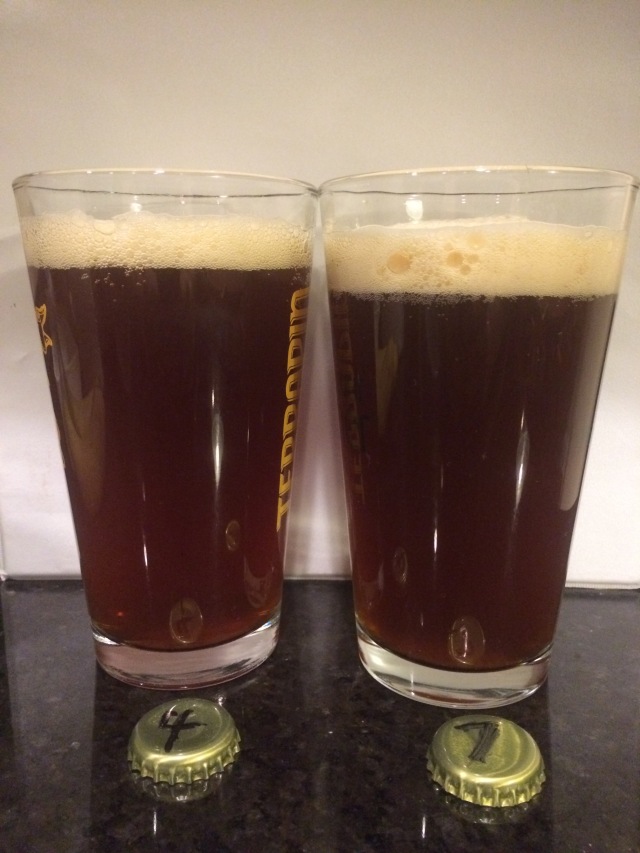This post is one in a series of making small adjustments to a single recipe in order to improve it, learn more about the impact each ingredient has on the finished product, and the art of recipe creation. The rest of the comparison tastings in this series can be found here.
When I sat down on the couch last night with two beers, my wife asked me which version of this recipe has been the best so far (she’s pregnant at the moment, so she doesn’t exactly know what my recent beers have tasted like). I was able to confidently say that one of the last two versions (6 or 7) had been the best, and as I thought about it, I was also able to say that almost every version has been better than the last. At times I forget my progress, but this tasting was helpful in reminding me of the improvements that have been made since the start of this journey.
Recap
Iteration 4 was the last version of this red IPA recipe before I finalized the malt bill. As such, even though these recipes are only three single steps away from one another, they are quite different. The recipes for each are as follows:
| Iteration 4
|
Iteration 7
|
Appearance
Both beers poured with a good head with moderate retention. Their colors were also very similar; however, upon closer inspection and comparison, Iteration 4 was more of an amber hue while Iteration 7 was a definitively darker red.

Aroma
Iteration 4 had a sweetness to the nose that, to me, is indicative of staling. Aside from this (which was the most prominent scent), there were also aromas of bread and citrus.
Iteration 7, in order of prominence, had aromas of plum, cherry, apricot/pear, and citrus.
Flavor
Iteration 4 tasted of bread and a staling sweetness which presented itself initially as a slightly citrus, nectarine-like flavor. This sweetness changed character as it warmed, but it was distinctively one I’ve come to associate with older beers. Any other flavors that were there were difficult to define because they were all rather faint—to the point of being indistinct.
With Iteration 7, perhaps due to its contrast to the lack of flavor in 4, I was able to pick out more precise types of flavors than I’ve been able to before. The taste was one of Bing cherries, black plum, apricot, and orange rind, although the citrus flavor was faint.
Final Thoughts
The stale quality of Iteration 4 is not altogether unexpected, as it is four months old at this point. I still find it important to see how these beers age, because they have all aged differently. I know some of this is due to a process change I made when I realized I had an issue with oxidation, but I have to think that some of it is due to the different ingredients used as well. Whatever the cause of the difference, this will be the last time I think it will be useful to compare Iteration 4 to another version of this recipe. One more month and I’m sure this beer will be undrinkable.
I’ve brought up the issue of clarity a few times before, speculating once that chill haze was the cause of my beer’s cloudiness. Both of these beers cleared up while they sat out. In fact, the level of clarity that both reached was one I would expect from a commercial beer of this color. Because I was able to observe this in both beers and they began to clear around the same time, I’m now confident that chill haze has been my issue all along.
